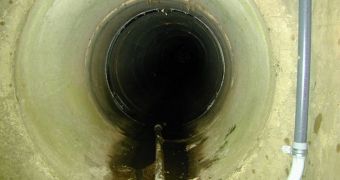In a new investigation, researchers argue that a common group of bacteria, that can readily be found inside sewage treatment plants, may hold clues as to the origins of eukaryotic cells.
These are cells that have a nucleus containing DNA. The team behind the new work believes that the microorganisms they analyzed are in fact a missing life in the evolution of life here on Earth, connecting eukaryotes to their precursors.
Scientists say that the emergence of organisms containing genetic material in their nucleus was one of the most important steps in the evolution of life here, as it allowed for the development of complex organisms such as ourselves.
They represented a transitory stage from basic bacteria to something more. As a rule, microorganisms of this type do not feature a nucleus, and as such cannot evolve to more complex forms.
Because of their simplicity and known resilience, bacteria ruled the Earth since life first emerged until 1.6 to 2.1 billion years ago, when the first eukaryotic cells developed, Science Daily reports.
Once the nucleus – as an established structure inside cells – appeared, life began becoming increasingly complex until multi-cellular organisms developed. Eventually, these developed to form plants, insects, animals and humans, as well as everything in between.
“Our discovery means that the appearance of eukaryotic cells on Earth can be explained by Darwinian evolution over billions of years rather than a 'big bang' fusion theory,” says Dr Emmanuel Reynaud.
The expert holds an appointment as a cell biologist at the University College Dublin. He is also one of the coauthors a new scientific paper detailing the findings, which was published in the November 26 issue of the top journal Science.
“Our analysis shows that PVC [Planctomycetes, Verrucomicrobiae, Chlamydiae] bacteria, members of which are commonly found in today's sewage treatment plants or acid bogs, represent an intermediate type of cell structure,” he adds.
“They are slightly bigger than other known bacteria, and they also divide more slowly,” Reynaud goes on to say. The research basically identified the ancestral cells that link early prokaryotes to later eukaryotes.
This was a large hole in the evolution theory, which was commonly filled by fusion theory – which stated that two prokaryote cells merged to form a new, more complex one. This idea was now proven wrong.
The new investigation was carried out by researchers at the University College Dublin, in Ireland, and the European Molecular Biology Laboratory, in Heidelberg, Germany.
“The structure of PVC suggests that it is an ancestor of a 'missing link' cell which connected prokaryotic to eukaryotic cells along an evolutionary path all those billions of years ago,” adds EMBL expert Dr Damien P Devos, also a coauthor of the Science paper.

 14 DAY TRIAL //
14 DAY TRIAL //